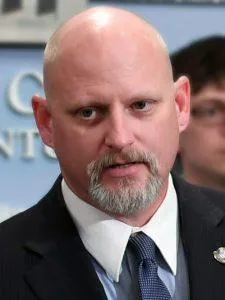EMS Week: Celebrating Those Who Save Lives
In life’s most frightening moments, emergency medical service practitioners stand between us and tragedy. EMS Week, which kicks off today, is a time to thank them for everything they do. With skill, courage and dedication, EMS workers serve on the front lines of society, providing care in the most perilous conditions – often at great cost to themselves.AFSCME is proud to represent more than 25,000 of these brave women and men, and has been fighting alongside them for the right to organize, for better working conditions in often hostile workplaces and better mental health treatment.
Hidden Heroes, Hidden Costs
In Washington, D.C., EMS workers at a private medical services company – American Medical Response (AMR) – fought to join AFSCME’s District Council 20 to secure better scheduling, fairer wages and more respect from management. This March, 200 workers won their election to join AFSCME.

One of those people is Lindsay Washington. For her, being an EMT “is one of the most challenging and rewarding things that one can do” because of how it benefits others.
“With this job I can help people,” she said with pride.
In Arizona, three major emergency medical services operations, also owned by AMR, have voted to join EMS Workers United-AFSCME Local 2960. Those EMS workers dealt with all-too-familiar challenges: extended, erratic hours, cuts to their health care, ambulances in need of repair, and an industry-wide denial of the personal and professional hardships they face.
Indeed, among the most pressing concerns EMS workers face is stress –coping with non-stop trauma day in and day out. All too often, the mental toll EMS workers struggle with gets ignored or minimized. Having to witness tragic occurrences, yet having few outlets with which to process them, as well as receiving little public appreciation, lead many EMS workers to feel isolated.
In California, AFSCME members like Jason Brollini, a veteran paramedic and president of UEMSW/AFSCME Local 4911, are making progress in getting some of these long-running concerns addressed. The EMS Workers’ Bill of Rights, a piece of legislation making its way through the California State Legislature, would curb some of these problems in that state.
Unified in Service
Despite the obstacles Brollini and other EMS works face, the driving force behind the work remains the same: the people they serve.
“We all get in this to help people,” says Brollini. “We do this to make a difference in someone’s life.”

Brollini’s thoughts mirror almost exactly those of another paramedic serving across the country with the New York City Fire Department, Cindy Stewart of AFSCME Local 2507 (DC 37).
“We love what we do,” says Stewart, a Brooklyn native. “We love the job. We work hard and we love our neighborhoods. We’re here to help out as much as can.”
Sometimes, however, an EMS worker’s role can be misunderstood. One of the biggest misconceptions about what a paramedic does comes when an EMS team arrives and family members expect them to immediately whisk their loved one to a hospital.

“It’s not always a load-and-go situation. We have to assess the patient first,” says Stewart, an 11-year veteran.
Those first moments on a scene are when she and her colleagues bring much their skill and training to bear to decide how best to treat a patient.
Honoring that skill, as well as the sacrifice and the dedication of the brave women and men who steer us away from danger back to safety, is what EMS Week is all about. To learn more about how to thank an EMS worker, click here.
